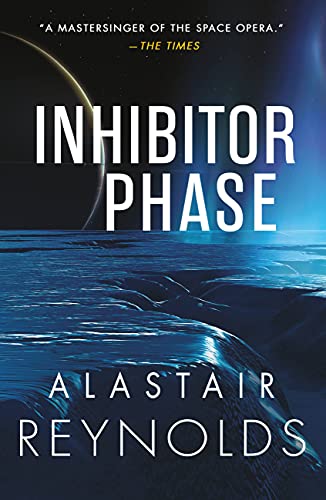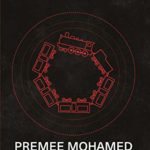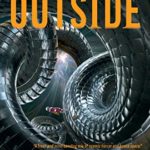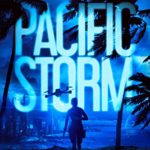Alastair Reynolds brings us back to the Revelation Space universe with the magnificent Inhibitor Phase. It’s a story about sacrifice, redemption, rebirth and basic human bonds of friendship, love and loyalty that builds to a powerful conclusion.
Now, a confession here. When I started reading science fiction seriously almost 20 years ago, Alastair Reynolds and the Revelation Space novels and stories opened the world of the genre to me. Before then, I just didn’t take SFF seriously, but in those books suddenly my mind popped. Those intricate stories combined deep imagination with scientific care for detail about how things worked. Here was a great city perched on a chasm being eaten away by a terrible plague, people called Conjoiners with shared mental experience and collective memories, hybrid races of humans, a vast decaying twisted up space ship, powerful women dominating much of the action and an elaborate history of human space exploration over many centuries. I was hooked.
I’ve been waiting a long time to get back to that universe (the Prefect novels didn’t quite get me there), and here at last in Inhibitor Phase is a book that links directly to all that future history and delves into questions I’d always been curious about. That said, (though I’m not the best judge) I believe anyone new to this universe can read Inhibitor Phase as a stand alone adventure. Reynolds has pared down his style, introduced new characters and provided all the necessary background tightly integrated into the new story. It’s a great book.
It starts with an extreme situation and doesn’t let up. Humanity’s last small settlements are hiding out from the devastating alien Inhibitors, swarming black cube robots bent solely on the annihilation of advanced technology among all species in the universe. The people of Sun Hollow, a community of a few thousand living underground on a desolate planet, detect an incoming spaceship that threatens to arouse the Inhibitors that can overcome all human weapons.
At all costs, that ship and its human passengers must be destroyed before getting too close and focusing Inhibitor attention on the hidden survivors. It’s a grim task that falls to Miguel de Ruyter, Sun Hollow’s leader. He sets off on a suicide mission, but strangely the ship seems to self-destruct and he rescues the sole survivor in a cramped ejection capsule. That survivor turns out to be a woman calling herself Glass who was never on board that ship but on a trip of her own to find Miguel. Using superior technology that overwhelms Sun Hollow’s defenses, she compels de Ruyter to go with her on a years’ long mission to find the one weapon that holds out hope of destroying the Inhibitors. It requires a painful break with his family and the only life he has known, but Glass leaves him no choice. Too much is at stake.
This tense opening sets the story going on a complicated journey to multiple planets in a series of ever more dangerous adventures to find the secret of the ultimate weapon, the Incantor. Along the way, Miguel and Glass return to worlds and characters familiar to readers of earlier novels and stories in this universe (especially Revelation Space, Redemption Ark, Absolution Gap and Galactic North). But as I say, the novel stands on its own. Reynolds expertly employs techniques to fill in the basic background without interrupting the flow of the story.
He forces information out of reluctant characters in one knife-edge dramatic scene after another as Glass and de Ruyter find crew members and technology to fill in parts of the Incantor puzzle. He also relates de Ruyter’s vivid dreams (or are they memories?) about a Martian military expedition that seems to have happened long ago. These mystify de Ruyter who only gradually comes to see that he may be more than the man he knows himself to be. With the aid of Glass and each new encounter, Miguel is forced to probe more deeply into his own consciousness and memory to uncover truths about himself that have long been obliterated. At the same time, we find out what we need to know about Revelation Space.
Glass’s spaceship, Scythe, takes Miguel to the planet Yellowstone and Chasm City, broken down long ago by the Melding Plague then hit by Inhibitors, where they find essential crew members. These include Scorpio, known as Pinky, a leader among the hyperpig chimera race of humans. In Chasm City they have to descend to a hellhole known as the Swinehouse to retrieve an essential stone of powerful alien properties and liberate dozens of the intelligent pigs from certain slaughter.
But that’s just for starters. They have to travel through the photosphere of a star, descend to the planet Ararat and there swim in an ocean teaming with the alien Pattern Jugglers. This is a hive mind race that has accumulated knowledge from all races in the universe and includes the memories of Nevil Clavain who has special knowledge about the Incantor and about Miguel’s past. There they also encounter a race of merfolk, a human-seal adaptation to a water world, that may be able to give a new home to the refugee hyperpigs. Then it’s on to Charybdis, the most intimidating planet of all, a gas giant where a symbiont race may survive that holds the key to Incantor technology.
I’m skimming the surface here to give you an idea of the range of adventures without spoiling the essential elements of the story. Each stage of the journey uncovers new, almost insurmountable problems. Reynolds offers detailed and cogent explanations for each exotic technology the crew finds and has to use to achieve the next goal. The bonds among the crew are tested to the breaking point over and over, and accomplishing each task requires incredible sacrifice. We can never forget that it’s humanity’s fate at stake in the face of an implacable foe.
Inhibitor Phase is an enormously satisfying adventure that works on many levels. It’s about sacrificing personal safety for the sake of humanity’s survival and about the resilience of the species even when forced to change forms to live under drastic conditions. Most of all it’s about the rebirth of individuals, humanity and even technology that in some forms takes on a life of its own. One great line captures that theme of human continuity: You don’t have to be human to be people. The consciousness, inventiveness, and the bonds that hold communities together survive no matter the changes in appearance or the complexity of merging minds.
I have no idea if Reynolds intends to continue the story of the fight against the Inhibitors, though the ending of the novel sets up the next step. As a fan, I’d love to see it but even on its own, Inhibitor Phase is an unforgettable book.
Thanks to Orbit and Net Galley for an Advance Review Copy without any preconditions or limitations on my review.





Leave a Reply